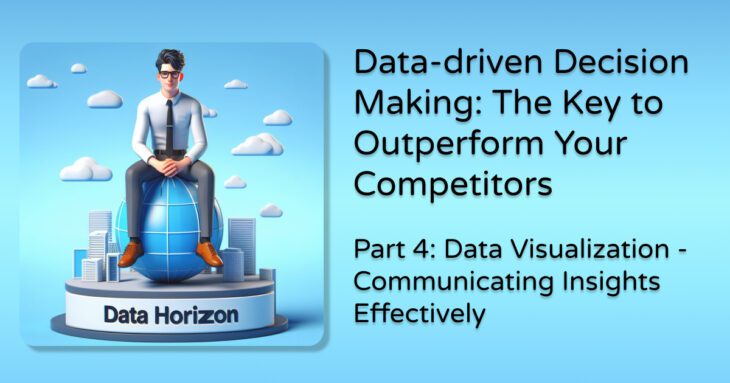Greetings once again, esteemed readers! As we journey further into the realm of data-driven decision-making, our focus now shifts to a captivating aspect that transcends numbers and statistics—data visualization. In this post, we will unravel the art and science of transforming complex data sets into visually compelling narratives, enabling organizations to communicate insights effectively, facilitate strategic decision-making, and drive actionable outcomes.
Principles of Effective Data Visualization
The Visual Language of Data
Data visualization serves as the visual language of data, translating complex information into intuitive charts, graphs, and dashboards that resonate with stakeholders across various organizational levels. By adhering to principles of simplicity, clarity, and relevance, organizations can create visualizations that engage audiences, convey key insights, and facilitate informed decision-making processes.
Types of Data Visualizations
From bar charts and pie graphs to heat maps and scatter plots, data visualization encompasses a myriad of techniques and formats designed to represent data in a meaningful and impactful manner. By selecting the appropriate visualization type based on the nature of the data, audience preferences, and communication objectives, organizations can enhance comprehension, foster engagement, and drive actionable insights.
Tools and Technologies for Data Visualization
The Palette of Possibilities
In today’s digital era, a plethora of tools and technologies are available to facilitate data visualization initiatives, ranging from specialized software applications to cloud-based platforms and open-source libraries. By leveraging industry-leading tools such as Tableau, Power BI, and Python’s Matplotlib and Seaborn libraries, organizations can create interactive dashboards, dynamic reports, and immersive visualizations that empower stakeholders to explore data, uncover insights, and make informed decisions.
Best Practices and Examples
To illustrate the principles and techniques of effective data visualization, let’s explore a few best practices and examples showcasing organizations that have leveraged visual storytelling to communicate complex ideas, drive engagement, and facilitate strategic decision-making. Whether it’s a healthcare provider visualizing patient outcomes to inform clinical decisions or a retailer mapping customer journeys to optimize marketing strategies, these examples underscore the transformative power of data visualization in transforming raw data into actionable insights.
As we conclude this enlightening exploration of data visualization, it becomes increasingly evident that embracing best practices, leveraging industry-leading tools, and adopting a user-centric approach are essential components of a successful data strategy. By transforming complex data sets into visually compelling narratives, organizations can communicate insights effectively, facilitate strategic decision-making, and drive actionable outcomes in today’s competitive marketplace.
Here at Data Horizon, we can help your organization transform complex data sets into visually compelling narratives, enhancing understanding, and facilitating strategic insights. Stay tuned for the next captivating chapter in this series, where we will navigate the complexities of overcoming challenges, addressing data privacy and security concerns, and exploring emerging technologies and innovations shaping the future of data-driven decision-making.
